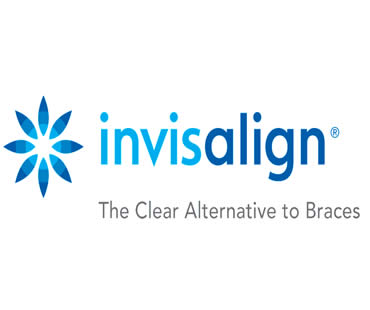
by Dr. Adkins | Sep 28, 2023 | Blog, Dental Topics 2, Invisalign
Having a smile that embarrasses you is not a good way to go through life. With so many options available for improving the way your teeth look, there’s no reason to continue trying to hide them. One of the best options available today is Invisalign, or invisible braces. This innovative technology may be able to help you transform your smile without the hassles of traditional orthodontics.
Invisalign consists of a series of clear plastic aligning trays that gently shift your teeth into better positions. Practically invisible when worn, these aligners are removable for eating and cleaning. No dealing with a mouthful of unsightly metal, avoiding restricted foods, or worrying about food becoming stuck in your braces.
What types of problems can Invisalign correct? Some common flaws include gaps between teeth, crowded teeth, overlapping teeth, mild malocclusions, or twisted teeth. Issues like these not only impact the appearance of your smile, but can also cause oral health complications such as difficulty in cleaning or improper wearing on your teeth.
Who should consider Invisalign? Anyone with teeth problems like those above is likely a good candidate, especially those who want to make the best impressions on others in their professional and personal lives. If you want to repair your smile without wearing traditional braces and have the choice of removing your orthodontics for special occasions, then you’ll find Invisalign very appealing. This applies to patients of many ages, from adults in the working world to self-conscious teens. Invisalign is a great solution for those who play sports or play musical instruments that might be hindered by traditional braces.
If you are unhappy with your smile, schedule a consultation with a professional who offers Invisalign as a treatment option. Find out if this treatment can help you, and begin your journey to a brand new beautiful smile.
We look forward to seeing you in our McDonough dental office

by Dr. Adkins | Sep 21, 2023 | Blog, Dental Topics 4, General Dentistry
The Importance of Regular Dental Check-ups
Regular dental check-ups are essential for maintaining good oral health. Even if you brush and floss regularly, there are some areas of your mouth that you may miss, making it possible for plaque and tartar to build up. Over time, this can lead to more serious dental problems like cavities, gum disease, and tooth loss.
By visiting your general dentist every six months for a check-up and cleaning, you can catch any issues early on before they become more severe. In addition to preventing dental problems, regular check-ups also enable your dentist to monitor changes in your overall health.
Many health conditions can affect the mouth or vice versa. For example, diabetes can increase the risk of gum disease while gum disease may worsen blood sugar control in people with diabetes.
Questions to Ask Your General Dentist During Your Next Visit
It’s common for patients to feel overwhelmed during their dental visits and forget some important questions they had in mind. That’s why we’ve compiled a comprehensive list of questions that you should ask during these appointments.
The goal is not only to help patients get the most out of their visit but also provide them with accurate information about their oral health status and how best they can maintain it. Over the next sections, we’ll go through various categories of questions that cover everything from general inquiries about dental care guidelines to specific treatments such as cosmetic dentistry procedures or orthodontic work.
General Questions
Going to the dentist for regular check-ups is crucial for maintaining good oral health. During your next visit, it’s important to ask your general dentist some general questions.
How often should I come in for a check-up?
The American Dental Association recommends visiting your dentist at least once every six months for a routine check-up and cleaning. However, the frequency of visits may vary depending on individual needs and oral health status. Your dentist may suggest more frequent visits if you have a history of dental problems or are at higher risk of developing them.
What are some common dental problems that you see?
During your check-up, your dentist will be examining your teeth and gums for any signs of decay or disease. Common dental problems include cavities, gum disease, and tooth sensitivity. Your dentist may also look out for signs of oral cancer or other medical conditions that can manifest in the mouth.
What can I do at home to improve my oral health?
In addition to regular dental visits, there are several things you can do at home to improve your oral health. Brushing twice a day with fluoride toothpaste and flossing daily are essential components of good oral hygiene.
Additionally, eating a balanced diet, limiting sugary drinks and snacks, and avoiding tobacco products can all contribute to better overall oral health. By asking these general questions during your next visit with a general dentist, you will gain valuable knowledge about how to maintain good oral health throughout the year.
Oral Hygiene Questions
Oral hygiene is the foundation of good oral health. Brushing and flossing your teeth regularly are essential to keep your teeth and gums healthy.
However, it is important to ensure that you are using the right techniques and products to maximize their effectiveness. Here are the common questions you should ask your dentist:
Am I brushing and flossing correctly?
The American Dental Association recommends brushing for two minutes twice a day with fluoride toothpaste. When brushing, angle the bristles of your toothbrush towards the gum line, use gentle circular motions, and remember to brush all surfaces of your teeth—including the backs of your front teeth, behind molars, and on top of chewing surfaces.
Flossing is also important to keep your gums healthy by removing plaque buildup between teeth that can lead to gum disease over time. Your dentist will show you proper flossing techniques so that you get maximum benefits from it.
What type of toothbrush and toothpaste should I use?
Your dentist can recommend the best type of toothbrush for you based on your individual needs such as soft or hard-bristled brush depending on whether you have sensitive teeth or not. Most dentists recommend using an electric toothbrush because they offer more consistent cleaning than manual brushes. In addition to choosing a good toothbrush, selecting a fluoride-based toothpaste is an essential part of maintaining good oral hygiene.
Look for pastes with fluoride in them as this mineral strengthens enamel, helping prevent cavities.
Preventative Care Questions
Do I need any dental treatments or procedures?
During your visit to the dentist, it is important to ask about any necessary treatments or procedures. Your dentist will be able to assess the overall health of your teeth and gums and recommend any necessary treatments.
This may include fillings, extractions, cleanings, or other procedures as deemed necessary for your oral health. It is important to address any dental issues as soon as possible in order to prevent further damage and costly treatments down the road.
Are there any warning signs that I should be aware of?
Your dentist can also provide you with information on warning signs to look out for when it comes to dental health. These may include bleeding gums, tooth sensitivity, bad breath, or changes in the appearance of your teeth. By being aware of these warning signs, you can take preventative measures before more serious problems arise.
Can you recommend any preventative measures to avoid future dental problems?
Prevention is key when it comes to maintaining good oral health. Your dentist can offer helpful tips and recommendations on how to maintain a healthy smile such as brushing and flossing regularly, using mouthwash, eating a balanced diet and avoiding sugary foods/drinks.
They may also recommend additional products such as fluoride toothpaste or sealants that can help protect teeth from decay. By following their advice and making small changes in your daily habits/behaviors you can avoid bigger problems down the line.
Schedule an Appointment
Regular dental check-ups are crucial in maintaining good oral health and preventing future dental problems. However, simply showing up to your appointment is not enough. Asking questions and being proactive about your oral health can make all the difference in the long run.
The Importance of Asking Questions
Asking questions during your dental visit helps you better understand your oral health and any potential problems that may arise. It also allows you to take an active role in your treatment plan and make informed decisions about your dental care. By asking questions, you can ensure that you receive the best possible care and maximize the benefits of each visit.
Don’t Be Afraid to Ask
If you’re unsure about something or have a question, don’t be afraid to speak up. Your dentist is there to provide expert advice and answer any questions you may have. No question is too small or insignificant when it comes to your oral health.
A Brighter Smile Awaits
By following these tips, asking the right questions, and being proactive about your oral health, a brighter smile awaits! Remember that prevention is key when it comes to avoiding more serious dental problems down the line. Make regular appointments with your dentist, ask lots of questions, maintain good oral hygiene habits at home, and watch as your smile shines brighter than ever before!
Do not let another day go by without taking care of your dental needs. Request an appointment now at our McDonough dental office!

by Dr. Adkins | Sep 14, 2023 | Blog, Dental Topics 4, Invisalign
The Journey to a Stylish New Smile: A Comprehensive Guide To Invisalign
Are you tired of hiding your smile because of crooked teeth or gaps? Do you dread the idea of wearing traditional metal braces for months on end?
If so, Invisalign may be the perfect solution for you. In this article, we’ll explore everything there is to know about Invisalign – from what it is and how it works, to the benefits of choosing this treatment method over traditional braces.
We’ll also delve into the process of getting fitted for and wearing Invisalign aligners, as well as answer frequently asked questions you may have. So if you’re ready to discover how you can achieve a stylish new smile with ease, keep reading!
Invisalign: The Clear Alternative To Traditional Braces
Traditional metal braces have been around for decades and are still a popular choice among orthodontic patients. However, they do come with their fair share of drawbacks.
For starters, they can be quite noticeable and may cause discomfort or irritation in the mouth. Additionally, they require frequent visits to the orthodontist for adjustments and can make maintaining proper oral hygiene more challenging.
In contrast, Invisalign aligners offer numerous benefits that make them an attractive alternative to traditional braces:
- Discreet Appearance: invisalign aligners are made from clear plastic and are virtually invisible when worn.
- Comfortable Fit: the smooth plastic material used in invisalign aligners doesn’t irritate or rub against your cheeks or gums like traditional brace wires can.
- No Food Restrictions: unlike with traditional braces where certain foods should be avoided due to getting stuck in brackets and wires, invisalign aligners are removable, allowing you to enjoy all your favorite foods without restrictions.
- Easy Maintenance: cleaning and maintaining invisalign aligners is a breeze- simply remove the trays and rinse them with water or use their cleaning kit for a deep clean.
- Shorter Treatment Time: Many patients find that Invisalign treatment takes less time than traditional braces. This is because it is easier to control tooth movements with clear aligners compared to metal brackets and wires!
Invisalign offers an array of benefits over traditional braces. If you’re looking for a more convenient, comfortable, and discreet way to straighten your teeth or fix gaps in your smile, then keep reading so we can show you how Invisalign works!
The Benefits of Choosing Invisalign
Comfort and Convenience
One of the biggest advantages of Invisalign over traditional braces is the level of comfort it provides. Unlike braces, which can cause irritation and soreness due to the brackets and wires rubbing against the inside of your mouth, Invisalign aligners are made from a smooth, comfortable plastic that won’t irritate your cheeks or gums.
You also won’t have to worry about getting food stuck in your braces or dealing with brackets popping off unexpectedly. With Invisalign, you can continue to eat all your favorite foods without having to modify your diet.
Aesthetics
Another benefit of choosing Invisalign is that the aligners are virtually invisible. While traditional braces can be highly noticeable and may make some people feel self-conscious, Invisalign aligners are clear and blend in with your teeth. This means you can undergo orthodontic treatment without anyone else knowing.
Improved Oral Health
In addition to providing aesthetic benefits, choosing Invisalign over traditional braces can also lead to improved oral health. With traditional braces, it’s easy for food particles to get stuck in between brackets and wires, leading to plaque buildup and an increased risk of tooth decay.
However, because Invisalign aligners are removable, you’ll be able to brush and floss as normal – without any additional tools needed – ensuring that your teeth stay healthy throughout treatment. Overall, if you’re looking for a way to improve both the appearance and health of your smile while maintaining comfort and convenience during treatment, then choosing Invisalign may be a great option for you!
The Process of Getting an Invisalign Treatment
Initial Consultation: The first step towards getting a stylish new smile with Invisalign is to schedule an initial consultation with an orthodontist who is certified to provide Invisalign treatment. During this appointment, the orthodontist will examine your teeth and determine if Invisalign is the right treatment option for you.
They will also take x-rays and impressions of your teeth which will be used to create a 3D digital model of your mouth. Fitting for Aligners: Once your orthodontist has determined that you are a good candidate for Invisalign, they will begin the process of fitting you for aligners.
This entails creating a custom-made set of aligners that have been molded specifically to fit snugly over your teeth. Typically, patients receive several sets of aligners at once, each designed to be worn for about two weeks before being replaced by the next set in the series.
Wearing Invisalign Aligners: Wearing Invisalign aligners is easy and convenient. Simply pop them in your mouth like any other dental appliance and go about your day as usual!
Patients typically wear their aligners for 20-22 hours per day, removing them only when eating or drinking anything other than water.
Maintaining Oral Hygiene: One important aspect of maintaining proper oral hygiene while undergoing treatment with Invisalign is to follow a regular tooth-brushing routine.
It’s also recommended that patients use an antibacterial mouthwash and floss regularly to remove any food particles or bacteria that may get trapped in between their teeth and the aligner trays. By following these simple tips, patients can ensure that their teeth stay healthy and clean throughout their entire treatment period!
Frequently Asked Questions About Invisalign
Is Invisalign painful?
One of the biggest advantages of Invisalign is that it is relatively pain-free compared to traditional braces. While you may experience some mild discomfort or pressure when you first begin wearing a new aligner, this should subside within a few days. Additionally, since there are no brackets or wires to adjust as with braces, you will likely experience less soreness overall.
How long does treatment typically last?
The length of Invisalign treatment can vary depending on the complexity of your case and your individual goals. On average, most patients wear their aligners for about 12-18 months. During this time, they will switch to new aligners every 1-2 weeks as directed by their orthodontist.
Can I eat and drink normally with Invisalign?
Yes! Unlike traditional braces, which require dietary restrictions due to the risk of damaging wires and brackets, with Invisalign you can eat and drink whatever you like. However, it is important to remove your aligners before eating or drinking anything other than water in order to avoid staining them or damaging them.
What happens if I lose an aligner?
If you lose an aligner or if it becomes damaged beyond repair, contact your orthodontist right away. They may recommend that you temporarily switch back to a previous set of aligners while new ones are ordered. It is important not to skip ahead in your treatment plan or skip wearing your aligners altogether as this can delay progress and lead to less favorable results.
What if I have dental restorations like bridges or implants?
Invisalign can still be a viable option for many patients with dental restorations such as bridges or implants. Your orthodontist can evaluate your unique situation and determine whether Invisalign is a good fit for you. In some cases, attachments may be placed on certain teeth to help the aligners grip properly and achieve the desired movement.
Investing in Your Smile Pays Off
Getting Invisalign treatment can be a significant investment, but the benefits of having a beautiful, healthy smile will last a lifetime. Studies show that people with straight teeth are more likely to be confident, successful, and happy in their personal and professional lives. By choosing Invisalign over traditional braces, you can achieve these same benefits without sacrificing your appearance or comfort.
The Future Is Bright with Invisalign
Invisalign technology is constantly evolving to make treatment faster, more effective, and more comfortable for patients. As the popularity of this orthodontic treatment continues to grow worldwide, it’s clear that Invisalign is here to stay. If you’re considering getting Invisalign treatment but are unsure whether it’s right for you, don’t hesitate to schedule a consultation with an orthodontist who specializes in this innovative treatment option.
Your New Smile Awaits
All things considered; Invisalign is an excellent choice for those who want a stylish new smile without the wires and brackets associated with traditional braces. The process is relatively simple and straightforward while providing excellent results. By following the tips outlined in this article and seeking guidance from an experienced orthodontist throughout your treatment journey, you’ll soon discover why so many people are raving about getting stunning smiles through Invisalign!
Do not let another day go by without taking care of your dental needs. Request an appointment now at our McDonough dental office!

by Dr. Adkins | Aug 31, 2023 | Blog, Dental Topics 2, Invisalign
Being a teenager can be difficult, and being a teen whose smile could use some improvement can be even more difficult. If your teen suffers from gapped, crooked, crowded, or misaligned teeth, you may be looking into Invisalign with your teen’s orthodontist as a smile solution.
In the past, metal braces were the standard for teens, leading to “metal mouth” smiles and the worry that food is caught there during lunch or after snacks. Metal braces can lead to even more self-consciousness for your teen. Using Invisalign will lead to the same results as traditional metal braces. While metal braces use wires and brackets to straighten teeth, Invisalign uses clear plastic trays, allowing your teen’s process of tooth straightening to be less obvious.
The Invisalign process begins with impressions and x-rays, providing valuable information regarding the current condition of your teen’s teeth. The mold made from the impressions serves as the reference for creating the custom-made Invisalign trays. A series of trays are used, gradually altering the teeth, leading to a more comfortable straightening process.
Invisalign trays are removed before eating, eliminating the trepidation associated with eating in public with traditional metal braces. Because there is no hardware to dislodge, there are no food restrictions, and your teen may continue to enjoy whatever foods desired.
Your teen will need to have good oral hygiene habits. Flossing once a day and brushing after mealtimes or at least twice a day is best. Invisalign trays are removed prior to these activities, allowing for an ease of oral care not provided by traditional braces.
Be sure your teen wears the Invisalign trays as recommend by his or her orthodontist. In order to maximize Invisalign effectiveness, your teen must wear the trays at all times, except during mealtimes or when brushing or flossing.
If you live in the McDonough area contact us today

by Dr. Adkins | Aug 24, 2023 | Blog, Cosmetic Dentistry, Dental Topics 1
A special area of dentistry has been formed that focuses on making your smile as flawless and appealing as possible. Cosmetic dentistry corrects imperfections that cause people to feel insecure and unhappy with their smiles. If you are one of those people, maybe it’s time to see a cosmetic dentist to give you back your smile and confidence. Here are some of the most common reasons for visiting a cosmetic dentist.
One of the biggest complaints that people have about their smile is the color of their teeth. Stains can cause your teeth to become yellow or brown with time, making your smile unattractive and embarrassing. Cosmetic dentists offer teeth whitening techniques that brighten your teeth, and can restore your pearly whites in just one appointment.
Gaps in your smile from missing teeth not only look awkward, they also make chewing and speaking more difficult. A cosmetic dentist can replace your missing teeth with dental implants, bridges, or dentures. Implants have become increasingly popular because they provide a permanent, comfortable, and natural-looking solution for missing teeth.
Cosmetic dentists can solve a variety of other imperfections that make you unhappy with your smile. Veneers improve the shape and color of your teeth by covering the fronts of your teeth with thin shells. Dental fillings and root canals resolve problems often linked to tooth decay. Crowns are used to cover an unhealthy tooth and restore its strength, shape, size, and appearance. They also may be used in conjunction with dental bridges to correct gaps in your smile.
There is no reason to go through life ashamed of your teeth. Make an appointment with a cosmetic dentist to see how your smile can be improved to get the bright, beautiful smile you desire.
Contact us today to schedule your cosmetic dentistry consultation in our McDonough dental office.







 (470) 665-5292
(470) 665-5292  E-Mail Us
E-Mail Us 
